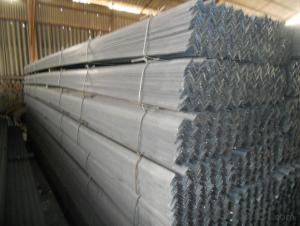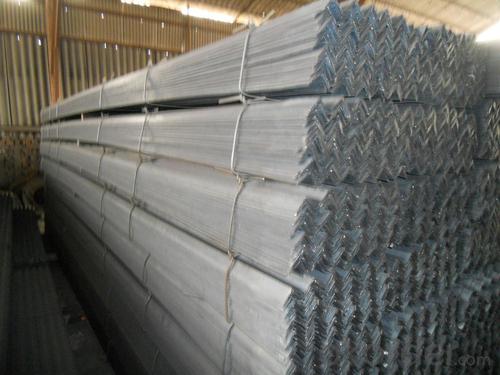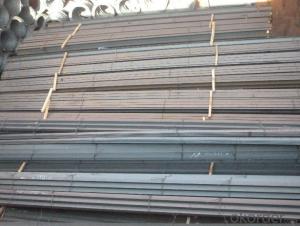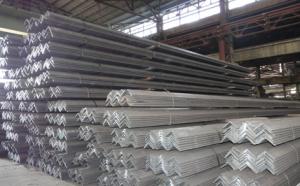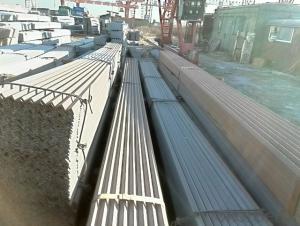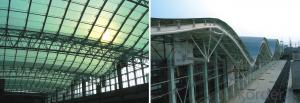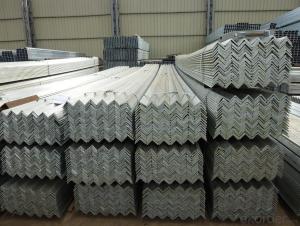Prime Hot Rolled Angle Steel For Steel Structure
- Loading Port:
- China main port
- Payment Terms:
- TT OR LC
- Min Order Qty:
- 100 m.t.
- Supply Capability:
- 5000 m.t./month
OKorder Service Pledge
OKorder Financial Service
You Might Also Like
Product Description:
OKorder is offering Prime Hot Rolled Angle Steel For Steel Structure at great prices with worldwide shipping. Our supplier is a world-class manufacturer of steel, with our products utilized the world over. OKorder annually supplies products to African, South American and Asian markets. We provide quotations within 24 hours of receiving an inquiry and guarantee competitive prices.
Product Applications:
Prime Hot Rolled Angle Steel For Steel Structure are ideal for structural applications and are widely used in the construction of buildings and bridges, and the manufacturing, petrochemical, and transportation industries.
Product Advantages:
OKorder's Prime Hot Rolled Angle Steel For Steel Structure are durable, strong, and wide variety of sizes.
Main Product Features:
· Premium quality
· Prompt delivery & seaworthy packing (30 days after receiving deposit)
· Can be recycled and reused
· Mill test certification
· Professional Service
· Competitive pricing
Product Specifications:
Manufacture: Hot rolled
Grade: Q195 – 235
Certificates: ISO, SGS, BV, CIQ
Length: 6m – 12m, as per customer request
Packaging: Export packing, nude packing, bundled
EQUAL ANGLES SIZES |
| ||
a(mm) | a1(mm) | thickness(mm) | length |
25 | 25 | 2.5---3.0 | 6M/12M |
30 | 30 | 2.5---4.0 | 6M/12M |
38 | 38 | 2.5 | 6M/12M |
38 | 38 | 3.0---5.0 | 6M/12M |
40 | 40 | 3.0---6.0 | 6M/12M |
50 | 50 | 3 | 6M/12M |
50 | 50 | 3.7---6.0 | 6M/9M/12M |
60 | 60 | 5.0---6.0 | 6M/9M/12M |
63 | 63 | 6.0---8.0 | 6M/9M/12M |
65 | 65 | 5.0---8.0 | 6M/9M/12M |
70 | 70 | 6.0---7.0 | 6M/9M/12M |
75 | 75 | 5.0---10.0 | 6M/9M/12M |
80 | 80 | 6.0---10.0 | 6M/9M/12M |
90 | 90 | 6.0---10.0 | 6M/9M/12M |
100 | 100 | 6.0---12.0 | 6M/9M/12M |
120 | 120 | 8.0-12.0 | 6M/9M/12M |
125 | 125 | 8.0---12.0 | 6M/9M/12M |
130 | 130 | 9.0-12.0 | 6M/9M/12M |
140 | 140 | 10.0-16.0 | 6M/9M/12M |
150 | 150 | 10---15 | 6M/9M/12M |
160 | 160 | 10---16 | 6M/9M/12M |
180 | 180 | 12---18 | 6M/9M/12M |
200 | 200 | 14---20 | 6M/9M/12M |
FAQ:
Q1: Why buy Materials & Equipment from OKorder.com?
A1: All products offered byOKorder.com are carefully selected from China's most reliable manufacturing enterprises. Through its ISO certifications, OKorder.com adheres to the highest standards and a commitment to supply chain safety and customer satisfaction.
Q2: How do we guarantee the quality of our products?
A2: We have established an advanced quality management system which conducts strict quality tests at every step, from raw materials to the final product. At the same time, we provide extensive follow-up service assurances as required.
Q3: How soon can we receive the product after purchase?
A3: Within three days of placing an order, we will arrange production. The normal sizes with the normal grade can be produced within one month. The specific shipping date is dependent upon international and government factors, the delivery to international main port about 45-60days.
Q4: How many tons of steel products could be loaded in containers?
Usually the steel products are delivered by bulk vessel because of the large quantity and the freight. However, there are no bulk vessel enter some seaports so that we have to deliver the cargo by containers. The 6m steel product can be loaded in 20FT container, but the quantity is changed according to the size, usually from 18tons to 25tons.
Q5: what is the difference between actual weight and theoretical weight?
All the section steel has two weights: actual weight and theoretical weight. Actual weight is the weighing out when the product delivered from the mill. Theoretical weight is calculated by pieces. The invoice can be based on each of them as your request.
Images:
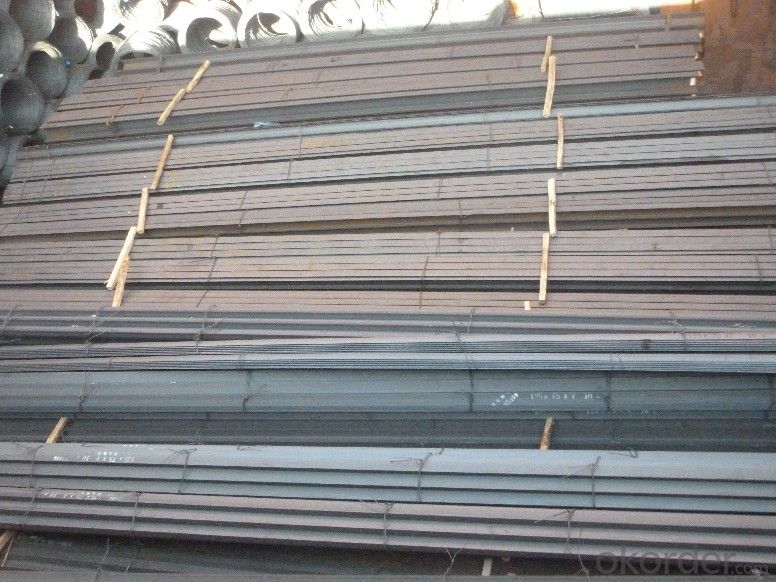
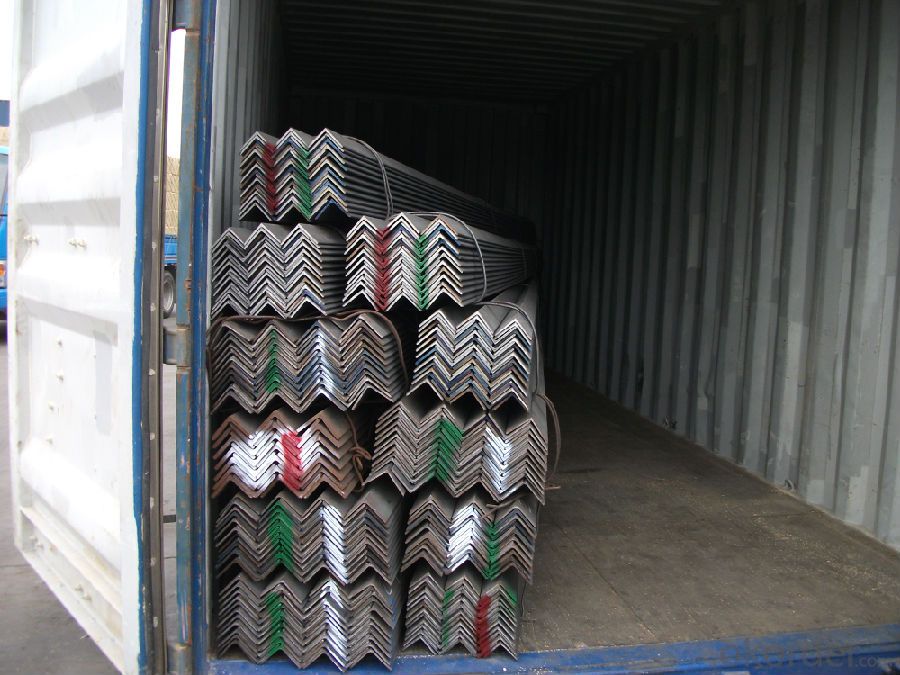
- Q: What are the different types of connections used for steel angles in industrial settings?
- In industrial settings, there are several types of connections used for steel angles depending on the specific application and structural requirements. Some of the commonly used connection types include: 1. Welded Connections: Welding is a popular method for connecting steel angles in industrial settings. It involves joining the angles using heat and pressure, resulting in a strong and durable connection. Welded connections are typically used when high strength and rigidity are required. 2. Bolting Connections: Bolts and nuts are used to connect steel angles in bolting connections. This type of connection allows for ease of assembly and disassembly, making it suitable for applications where flexibility and adjustability are important. Bolting connections can be easily tightened or loosened as needed. 3. Riveted Connections: Riveting involves using metal rivets to connect steel angles. This connection type offers good strength and stability and is commonly used in heavy-duty applications. Riveted connections require specialized equipment and skilled labor for installation and removal. 4. Adhesive Connections: Adhesives can also be used to bond steel angles together. This type of connection provides good load distribution and can be used in applications where welding or bolting is not feasible. Adhesive connections require proper surface preparation and adhesive selection to ensure adequate bonding strength. 5. Mechanical Connections: Mechanical connections such as cleats, brackets, plates, or clips can be used to connect steel angles. These connections provide flexibility and ease of installation, allowing for adjustments and modifications in the future if needed. It is important to note that the selection of the connection type depends on various factors such as the load-bearing capacity required, the structural design, safety considerations, and the specific environmental conditions in the industrial setting. Consulting with structural engineers and following industry standards and codes is crucial to ensure the appropriate type of connection is used for steel angles in industrial applications.
- Q: Are steel angles suitable for outdoor furniture?
- Yes, steel angles are suitable for outdoor furniture. Steel is a durable and strong material that can withstand various weather conditions, making it an excellent choice for outdoor furniture. Steel angles provide stability and structural support, ensuring that the furniture can withstand heavy loads and remain sturdy. Additionally, steel is resistant to rust and corrosion when properly treated, which is essential for outdoor furniture exposed to moisture and changing weather. Steel angles also offer a sleek and modern aesthetic, allowing for versatile design options for outdoor furniture. Overall, steel angles are a reliable and long-lasting choice for outdoor furniture due to their durability, strength, and resistance to environmental elements.
- Q: Can steel angles be used for support structures?
- Support structures can indeed utilize steel angles. In the construction and engineering sectors, these angles are frequently employed for a range of purposes, including delivering stability and support to structures. The inherent L-shape of steel angles facilitates simple bolting or welding, rendering them ideal for crafting robust and long-lasting support structures. Common applications include building frames, roof trusses, bridges, and industrial platforms. Furthermore, steel angles possess exceptional load-bearing capacity and the ability to withstand bending and twisting forces, thus establishing themselves as a dependable option for support structures.
- Q: Are steel angles available in different grades?
- Yes, steel angles are available in different grades. Steel angles are commonly made from carbon steel, which is available in various grades such as A36, A572, and A588. These grades have different chemical compositions and mechanical properties, making them suitable for different applications. Additionally, stainless steel angles are also available in different grades such as 304 and 316, which offer excellent corrosion resistance properties. The choice of steel angle grade depends on the specific requirements of the project, including strength, durability, and corrosion resistance.
- Q: Are steel angles suitable for balcony construction?
- Yes, steel angles are suitable for balcony construction. They are commonly used in balcony structures due to their strength, durability, and versatility. Steel angles provide excellent support and stability for balconies, ensuring their structural integrity. Additionally, steel angles can be easily customized and incorporated into various designs, making them a popular choice for balcony construction.
- Q: Can steel angles be used in mining or offshore applications?
- Yes, steel angles can be used in mining or offshore applications. Steel angles are commonly used in these industries due to their strength, durability, and versatility. They can be used for various purposes such as framing, support, reinforcement, and bracing in mining structures and offshore platforms. Additionally, steel angles can withstand harsh environments, extreme weather conditions, and corrosive elements commonly found in mining or offshore operations. Their ability to provide structural stability and resistance to impact and vibrations makes them suitable for these applications. Overall, steel angles are a reliable and cost-effective choice for mining and offshore industries.
- Q: Can steel angles be used in pedestrian bridges?
- Pedestrian bridges can indeed make use of steel angles in their construction. The high strength-to-weight ratio and versatility of steel angles make them a common choice in bridge construction. These angles are frequently employed as structural elements, providing the necessary support, stability, and rigidity to the bridge structure. With their ability to withstand heavy loads and forces, steel angles are well-suited for pedestrian bridges, which must bear the weight of individuals walking across. Moreover, steel angles can be easily fabricated and welded, enabling flexibility in the design and construction of pedestrian bridges. All in all, steel angles are widely favored for constructing pedestrian bridges due to their durability, strength, and user-friendly nature.
- Q: What are the different grades of steel used for manufacturing steel angles?
- There are several different grades of steel that are commonly used for manufacturing steel angles. These include: 1. Mild Steel: This is the most common grade of steel used for manufacturing steel angles. It has a low carbon content and is relatively inexpensive. Mild steel angles are suitable for a wide range of applications and have good weldability and formability. 2. High-strength low-alloy (HSLA) steel: This grade of steel contains small amounts of alloying elements such as copper, vanadium, or niobium, which enhance its strength and toughness. HSLA steel angles are commonly used in structural applications where high strength and durability are required. 3. Stainless Steel: Stainless steel angles are manufactured using alloys that contain a high percentage of chromium, which provides excellent corrosion resistance. These angles are commonly used in environments where corrosion is a concern, such as coastal areas or chemical plants. 4. Carbon Steel: Carbon steel angles are made from a combination of iron and carbon, with carbon content typically ranging from 0.05% to 2.1%. The higher the carbon content, the stronger and harder the steel. Carbon steel angles are commonly used in construction and machinery manufacturing. 5. Alloy Steel: Alloy steel angles are made by adding various alloying elements such as manganese, nickel, chromium, or molybdenum to carbon steel. These additions improve the strength, hardness, and resistance to wear and corrosion of the steel. Alloy steel angles are commonly used in heavy-duty applications such as mining equipment or industrial machinery. The choice of grade of steel for manufacturing steel angles depends on the specific requirements of the application, including the desired strength, durability, corrosion resistance, and cost.
- Q: Can steel angles be used in conveyor systems?
- Yes, steel angles can be used in conveyor systems. Steel angles are commonly used as structural support and reinforcement in conveyor systems due to their strength, durability, and versatility. They can provide stability and rigidity to the conveyor structure, ensuring smooth and efficient material handling.
- Q: Can steel angles be recycled or reused?
- Yes, steel angles can definitely be recycled and reused. Steel is one of the most recycled materials in the world due to its durability and high value. When steel angles are no longer needed or become scrap, they can be collected, sorted, and sent to recycling facilities. The recycling process involves melting down the steel angles to remove impurities and then shaping the molten steel into new products. Recycled steel angles can be used in various industries such as construction, automotive, and manufacturing, just like newly produced steel angles. This not only conserves natural resources but also helps reduce energy consumption and greenhouse gas emissions associated with producing new steel. Recycling steel angles is an effective way to promote sustainability and contribute to a circular economy.
Send your message to us
Prime Hot Rolled Angle Steel For Steel Structure
- Loading Port:
- China main port
- Payment Terms:
- TT OR LC
- Min Order Qty:
- 100 m.t.
- Supply Capability:
- 5000 m.t./month
OKorder Service Pledge
OKorder Financial Service
Similar products
Hot products
Hot Searches
Related keywords
